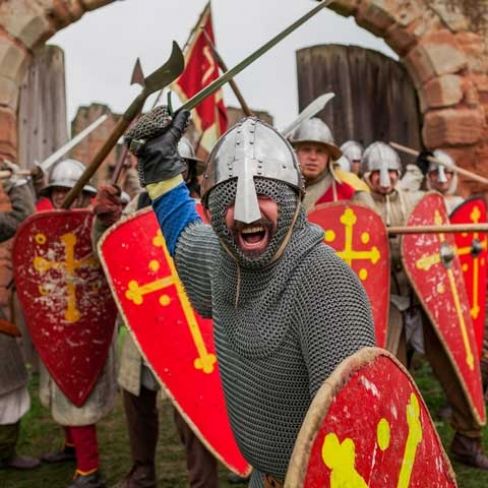
In England the beginning of his long reign, Henry , the monarchy had to defeat internal opposition again. Just as at iii had to suppress opponents who took refuge behind castle walls, following a civil war which had revolved around the taking and holding of castles, so too after his son Edward had defeated and killed the rebel leader Simon de Montfort, the now elderly king had to set about another immense military operation to end the war.
The conflict between the king intent on his royal privileges and a baronial party determined to champion their own rights had broken out into open war in 1264. In that year, the royal army laid siege to the town of Northampton, held by Simon de Montfort the younger. The defenders were few in number, and the attackers broke in through the town walls by sapping. The defenders in the castle surrendered. Meanwhile, the barons captured the royal castle at Gloucester, held by a very small garrison unable to prevent the attackers from breaking through the gates from the town. The governor took refuge in the castle’s old donjon but its door was also broken down with iron tools. Simon himself, earl of Leicester, took the old motte castle of Warwick. At Easter, the baronial forces attacked Rochester, held by the earl of Arundel. Siege engines were delivered by water from London. Incendiary devices using fat and lard were prepared for an attack on the bridge, while others attacked from the side of the town with ballistas, succeeding in breaking down the gate to the bailey, whereupon the defenders retreated to the donjon, just as they had in the siege of 1215, and engines were again deployed, along with an attempt to mine, perhaps remembering the success of this method during King John’s attack. With the king’s army successfully engaged in extending control in the midlands, Simon returned to London. The earl’s own main base was at the castle of Kenilworth, which he had devoted attention to preparing for defence if needed, leaving it well supplied with throwing engines.
The Siege
Following the death of the earl at the battle of Evesham (1265), his followers continued to resist. A group of Montfortians held out in the isle of Axholme, but the main centre was the earl’s castle at Kenilworth. In the ensuing siege, with little prospect of relief, and facing the resources of an entire kingdom, Kenilworth emulated Bedford in 1224 in holding out against Henry III in a prolonged resistance. The event was well documented both in the chronicles and in government records.
De Montfort had carried out much building at the old castle dominated by its Norman donjon. Some of this work had been grand domestic quarters fitting for a great earl, but alongside were powerful defences too, and particularly critical were the water defences, including a wide lake covering the western and southern sides, while other less substantial water works covered the other sides. These probably dated from King John’s time, but now created significant problems for his son. A strong curtain with projecting towers completed the defences. From June to the end of December 1266 the castle held out. The king erected numerous siege engines (11 in one source), which cause much serious damage, although they could only be deployed against limited sectors of the castle because of the width of the lake. This also enabled the defenders, likewise provided with engines, to shoot back with some effect. The attackers resorted to building a wooden siege tower, from which crossbowmen could fire into the castle, but this was a relatively easy target for the defenders’ artillery. An attack by boat across the lake was also considered. The water defences deprived the attack of its most potent weapon, the mine, and kept the artillery from creating a breach. In the end, the large number of people being sheltered in the castle told against it, as supplies were finished, and they negotiated surrender. The records show the king instructing his sheriff of Gloucester to send engines to Warwick in preparation for the siege, and subsequent demands for the materials needed to sustain the engines. One order was for horsehair for the engines: this was the first evidence of the reappearance in England of torsion weapons in the shape of the springald. The cost was high: in October 1267, the king was authorising payment to the sheriff of Warwickshire for his expenses in “taking down the king’s engines” at Kenilworth. As late as 1271, he was still paying off the debts from the siege. The sheriff of Gloucester reckoned £15 for seven beams, pendants and iron pegs and their carriage to Kenilworth; another cost was that of transporting stones for ammunition, while the siege tower mentioned (berefridum) involved a further payment for the timbers transported by the sheriff of Worcester.